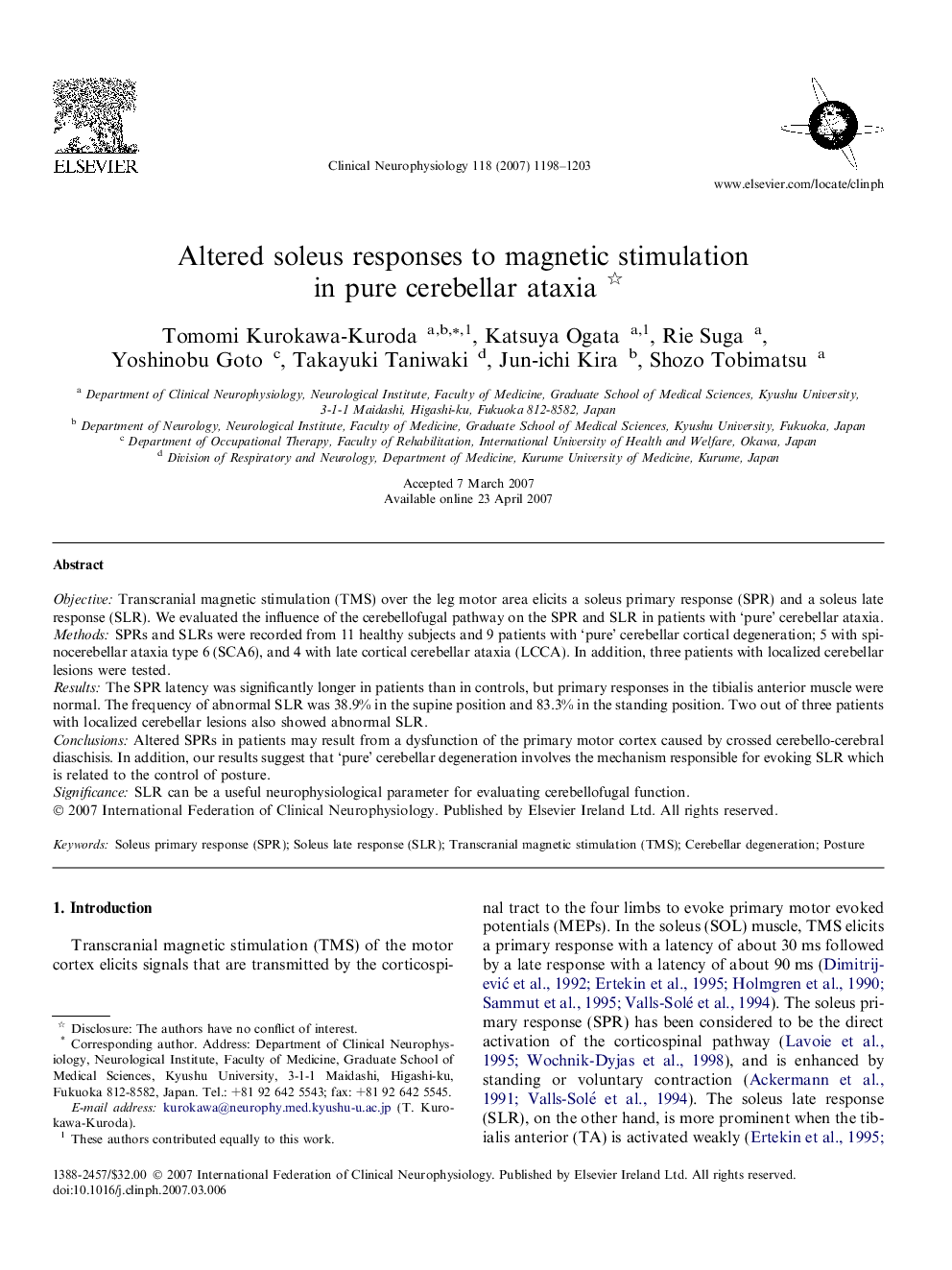| Article ID | Journal | Published Year | Pages | File Type |
|---|---|---|---|---|
| 3047695 | Clinical Neurophysiology | 2007 | 6 Pages |
ObjectiveTranscranial magnetic stimulation (TMS) over the leg motor area elicits a soleus primary response (SPR) and a soleus late response (SLR). We evaluated the influence of the cerebellofugal pathway on the SPR and SLR in patients with ‘pure’ cerebellar ataxia.MethodsSPRs and SLRs were recorded from 11 healthy subjects and 9 patients with ‘pure’ cerebellar cortical degeneration; 5 with spinocerebellar ataxia type 6 (SCA6), and 4 with late cortical cerebellar ataxia (LCCA). In addition, three patients with localized cerebellar lesions were tested.ResultsThe SPR latency was significantly longer in patients than in controls, but primary responses in the tibialis anterior muscle were normal. The frequency of abnormal SLR was 38.9% in the supine position and 83.3% in the standing position. Two out of three patients with localized cerebellar lesions also showed abnormal SLR.ConclusionsAltered SPRs in patients may result from a dysfunction of the primary motor cortex caused by crossed cerebello-cerebral diaschisis. In addition, our results suggest that ‘pure’ cerebellar degeneration involves the mechanism responsible for evoking SLR which is related to the control of posture.SignificanceSLR can be a useful neurophysiological parameter for evaluating cerebellofugal function.
